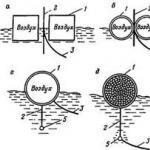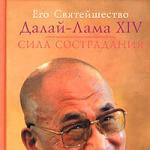Wood burning for beginners. Suitable wood for burning. General characteristics of the "Pattern" device
Wood burning is incredibly interesting - it is a popular home hobby for people of all ages. Experienced pyrographers paint exclusive paintings and create incredible masterpieces. Children enjoy learning how to burn geometric shapes and various animals on wood. The burning technology itself has been known for a long time and is quite simple, but beginners in this business will have to show a little patience and perseverance to understand the basic principles of working with an electric burner, as well as study the available methods of applying an ornament or image to a wooden workpiece.
Wood burning for beginners begins with mastering basic practical skills and theory, which also includes safety rules when working with a pyrograph (especially for children). Before you start creating, you need to properly prepare workplace and stock up additional materials. Let's consider the most important points during the burning process, which every pyrographer must know.
How to woodburn for beginners
One of the entertainments of childhood is burning on a wooden blank. To avoid typical mistakes In the process of work, it is advisable to become more familiar with the intricacies of this type of creativity. Beginning pyrographers are interested in how to burn patterns using soldering and is it possible to burn them with a soldering iron? For the most comfortable and safe wood burning, you need to use only an electric pyrograph of the lavalier or soldering iron type - a classic soldering iron is clearly not suitable for these purposes.
In addition, choose the right wooden blank on which you will burn a design or pattern. Give preference to light and soft wood species with a combustion temperature of more than 230–250℃. Experienced pyrographers agree that of all the abundance of “consumables” on the Internet, it is only possible to use linden, birch or aspen. For trial works will do furniture plywood.
It is better to burn the first drawings on a wooden workpiece in small dots using a lavalier-type burning soldering iron. This option is suitable for children. If you like to experiment, choose a compact burning machine with a hard pen. If necessary, you can change the “style” of the pattern or image using interchangeable attachments. Unlike loop burners, here the thickness of the line is adjusted by the degree of pressure on the handle.
Preparation and finishing of the canvas before burning
The type of wood for beginners in pyrography (to draw pictures), as well as the “character” of the image, is the main thing you need to decide on before starting work. It is better to burn relief patterns on hard surfaces, and smooth designs on soft wood. In this case, any surface, regardless of the type of pattern being burned, must be flat. The easiest way to achieve the desired effect is to sand the surface with fine sandpaper.
![]()
![]()
In addition to the plywood board or other wooden blank on which you will burn, you must also prepare the following tools and materials for work in advance: pencil, tape, buttons and other office supplies, standard copy paper or stencil, metal stand for the handle of the device. Brass attachments are also useful, which are always best kept at hand. For lavalier-type wood burners, buy nichrome wire of different diameters (0.3-1.5 mm), from which you can make spare loops.
Step-by-step instructions for beginners
Remember the main rule - the smoother the surface of the workpiece, the easier it will be to burn. In addition, learn how to transfer an image from a sketch to finished boards using black carbon paper (tracing paper) or using translucent papyrus paper. Alternatively, you can use stencils or outline the design with a stationery knife, gently pressing on the lines of the image - it is easier to guide the burner’s tip along the resulting groove. Take the time to master the wood burning technique, which is described in detail in the instructions for the device.
![]()
![]()
To better understand how to work with a pyrograph correctly, watch a master class on burning on the Internet at your leisure. Instructional videos can be found on YouTube. During your first DIY projects, do not rush to burn out complex graphic elements - start with geometric shapes and simple silhouettes. To be most productive, you will need the following skills: perseverance, accuracy and attentiveness. Remember that you are working with a power tool, so be careful.
Instructions for beginner pyrographers:
— Choose a comfortable workplace. It is advisable to work at a table with an inclined surface so that the plywood board is located at an angle of 30–35 degrees relative to your eyes. The burning device and auxiliary accessories should be located within walking distance so as not to have to reach across the entire table for them.
— Start burning the drawing from the outer lines. After this, move on to the main part of the pattern or design. Start working on minor fragments in last resort. Please note that it is better to burn the painting in stages - in several sections of the “canvas” one by one.
— After completing the main work, if desired, the drawing can be painted with bright watercolors or coated with colorless varnish. It is better to immediately sand the edges of the plywood board with fine sandpaper so as not to accidentally injure yourself.
![]()
![]()
You can begin the burning process directly after the soldering element has heated to the desired temperature. IN modern models pyrographs, a built-in LED indicator indicates that the device is ready for operation. If the brass nozzle or nichrome wire does not warm up properly, this indicates a faulty transformer. It is better for children not to use such a tool. Do not forget to periodically disconnect the pyrograph from the power supply.
To get lines and strokes of different thicknesses, adjust the burning intensity. For fine lines, move the tool handle smoothly but quickly. To get beautiful thick strokes or to create a shadow effect in your drawing, burn slowly. In addition, you can adjust the hue saturation by increasing the pen temperature. But remember that with high heat the spiral often burns out.
Wood burning is a very common skill today. Not only children, but also adults are interested in it. And this is not just like that, because during this activity the ingenuity, imagination and, of course, the skill of the person (child) are manifested. Today we will talk about how to burn wood for beginners. For those who do not know how to burn, this article will show and tell you how to learn.
Also, when choosing a burning tool, many people ask the question: “Is it possible to burn wood with a soldering iron?” The answer is: the most important thing is that the soldering iron itself is powerful, then you can use it to burn. But it is better, of course, to purchase a special device, since it already has suitable power, and the kit includes additional attachments. With their help, burning will be even easier.
Let's start with a portrait
Burning out a portrait is not so easy. The most important thing is to correctly and efficiently transfer the drawing from the photo to the base.
As already mentioned, first you need to transfer the portrait from a photo or from life to wood. He should look like the person you decided to paint a portrait of.
Then we begin the burning process itself. All thick tips were used for this portrait. In the end, this is what happened:


Create an angel
This master class will describe step by step process creating a scorched picture, which we will call “Angel”.
The following tools and equipment are required for work:
- Plywood or wood;
- Burnout apparatus;
- Ready drawn template;
- Copy paper;
- Drill;
- File;
- Jigsaw;
- Stain;
- Frame;
- PVA glue.
First of all, you need to make a template. We look for a suitable picture on the Internet and print it in the size you need. Next, we cut out or buy a sheet of plywood, which will later be the base.


We transfer the printed template to the base.

Then you need to cut out the necessary parts. To do this, first we use a drill and use it to make holes. In the future we will insert a file into them and cut them out. First of all, we cut out the smallest parts, gradually moving on to larger ones. After which we take burning apparatus and we make touches around the office.

Substrate under finished work covered with stain. The color is chosen at your discretion. We glue the finished parts with PVA glue. Then we insert the finished picture into the frame and after that apply a layer of varnish.


That's all, the painting “Angel” is completely ready.
Easy lesson
- Plywood sheet;
- Burning apparatus;
- Sketch (drawing);
- Copy paper;
- A simple black pencil;
- Watermelon (pumpkin) seeds;
- Scotch;
- Paints;
- Brush;
- Sandpaper.
So let's get started with the process.
First, let's prepare the base. We take a sheet of plywood of the size we need and sand it with sandpaper. The surface must be flat and smooth.

We select a drawing online and print it out. Afterwards, using carbon paper we transfer it to plywood.
Advice! To prevent the carbon copy with the design from moving, you can secure them with pieces of tape.

We transfer the drawing to the base. This is what should happen. Be sure to check that all lines have been drawn.


Here we come to the burning process itself. Let the burning device heat up, and then burn along the drawn contour.

After burning the outline, you need to color the drawing. We do this carefully.

The work is almost ready. All that remains is to make a frame using glue and seeds. We remove our work until it dries completely.

This way you can burn the following:
- Various paintings;
- Logos;
- Various inscriptions;
- Patterns.
And all this can actually be done at home. After all, this skill does not require special expensive equipment as such.
Lush flowers
For work you will need the following tools and materials:
- Clear nail polish;
- Brush;
- Burnout apparatus;
- Eraser;
- A sheet of plywood of the required size;
- carbon copy;
- Sandpaper.
How to perform burning correctly?
To begin with, we select and decide on a pattern. Print it out on a piece of paper. Then we take a sheet of plywood of the size we need.


Before transferring the drawing onto the base, it is necessary to level it. How to do this correctly? For this we take sandpaper and sand the base.

We place carbon paper on the prepared base, and on top of it a sheet with a design. To prevent the paper and sheet from moving, we suggest securing them to the plywood. We translate the drawing.

Check to see if all the lines are printed. Here's the drawing that came out:

We plug the burning device into the outlet and wait for it to heat up. Then we carefully begin to burn the design along the contour.
After the outline is burned out, you need to fill in the background. We do this with strokes that are parallel to each other.

To make our picture look more neat, we suggest you decorate it with a frame made of watermelon seeds. All that remains is to coat the finished work with varnish.
MK taken from the website Step by step dot ruCategory:
Pyrography(or Woodburning) - exciting and useful activity both for children and adults. For example, a terribly difficult question recently arose in our family: what to give grandpa for a birthday? The date is round - 60 years, and the gifts from the grandchildren had to be special. My eldest son decided to give his grandfather a small painting made using burning. So now I’ll tell you how he and I made a gift for my grandfather (that is, I’ll present to your attention photo lesson - wood burning for beginners) .
We will need:
- electric wood burning device,
The board on which we will burn,
Carbon paper - 1 sheet,
A simple pencil, an eraser (to correct a pencil mistake),
Hairspray (and preferably regular woodspray),
Paints (gouache or acrylic) - instead of paints, bright felt-tip pens, wax crayons or even simple pencils are also suitable.
Let's get started:
1. First of all, we need to find a suitable drawing. We searched in books and took a drawing from the book “The Complete Encyclopedia of Oriental Patterns.”

2. We selected a board of suitable size (we still had them after the construction of the house was completed) and photocopied the desired drawing (you can skip this part of the step and go straight to step number 4):

3. Then we cut out the drawing along the contour, attached it to the board (taking into account the “frame”), outlined it with a pencil and sawed off the unnecessary part of the board. He carefully sanded the part of the board on which my child planned to burn the drawing:


4. Now you need to transfer the drawing from the paper to the board. Use carbon paper for this:


If the drawing in some places is not too clear, draw it with a simple pencil directly on a wooden piece:

5. Now it’s the turn of the burning device: don’t forget to regulate the degree of its heating so that you don’t get “scorches”:



6. You can leave the picture as is, but you can also paint it. In order not to make a mistake in choosing a color, my son first tried different colors on a photocopy of the drawing:


7. In order for our picture to be hung on the wall, we need to make a recess on its back side for a screw (I instructed my husband to do this and he drilled the board for us):

8. It is better to fix the design on wood using a special varnish (it is sold in construction and hardware stores). We didn’t have it “on hand”, we had to use hairspray, which was applied in three layers (each new layer was applied after the previous layer had completely dried):


That's all. Our gift is ready and you can go visit!
Advice: Very To Burning on an inclined cut of a tree with preserved bark looks beautiful.
Woodburning or pyrography- an artistic craft that dates back to the times of Ancient Egypt. Besides the ancient Egyptians, pyrography was also popular among African tribal communities. Today, wood burning is successfully practiced as a type of decorative and applied art and as a technique in artistic graphics. Wood burning is divided into hot burning (pyrography), hot printing (pyrotyping), burning on hot sand, using friction, acid and sunlight. This article examines the work of 3 contemporary artists who are fluent in the art of wood burning. The names of the trio of pyrographers are known throughout the world - these are Julie Bender, Eben Kavanagh Rutenbach / LeRoc and Peter Walker. In order not to be scattered, I propose to immediately move on to getting to know the artists and their creative baggage.
Wood burning by Julie Bender. Sepia pyrography
Julie Bender- the brightest representative of pyrography, skillfully mastering the fire element. Her unique and inimitable wood paintings express her deepest appreciation for living nature. Julie Bender, using wood burning, managed to convey the smallest details of the animal world so accurately that one can hardly resist drowning in the palette of halftones and shades. Wealth unique style The artist’s work is characterized by microscopic details of the image using light rays and ultra-fine shading. To create one single painting like this requires not only talent, diligence and experience, but also the love of being called a pyrographer, otherwise you can go crazy.

Before starting wood burning, Julie Bender is inspired by observations wildlife in the forest areas of Colorado, collects material, and then thoughtfully, according to the call of the heart, composes each work - makes preliminary, original sketches on a specially selected, perfectly polished board or on thick watercolor paper. The wood of choice is maple, because the latter has a creamy tint and light grain. As for paper, it is naturally easier to work with it, since paper material implies versatility in actions, in particular, experiments with various effects. The burning process is carried out slowly, layer by layer, which requires a lot of time and effort. The tools are pyrographs with different nozzles, both in shape and size, including ultra-fine tips. With their help, every glare of light, every hair is scrupulously worked out. Considering how masterpiece Julie Bender's paintings are, there is no doubt that the conclusion is clear - she loves her profession.



There are several people all over the world who professionally burn wood using a pyrograph, and I am one of them!
The artist has a bachelor's degree in fine arts; in 1980 she graduated from the first State University Missouri. I have been actively involved in wood burning since 2002. In addition to pyrography (wood burning), after graduating from university and until mid-2012, she was engaged in design, also supervised websites and software, while working as a manager in one of the American companies.



Bender is an honorary member of the Society of Animal Artists. Her work has received international attention, starting in the United States, and has been exhibited in public museums and private galleries around the world, and is permanently in the collection of the Leigh-Yawkey Woodson Art Museum's. The price for one notebook-sized brown fire print can reach four thousand dollars. It takes from a week to several months to complete one work surface.



Fun fact about Julie Bender: I came to wood burning due to the death of my beloved dog. To ease the pain, the artist decided to acquire a pyrograph (a tool for burning wood) and recreate a portrait of the dog on the urn before burial. On her part, it could have been a farewell sign, a gesture of gratitude and nothing more, but during the burning process, the designer unexpectedly realized that she had found her calling. Since then, Julie has continued to paint with fire the world of domestic and wild nature - dogs, birds, deer, elephants, zebras, horses... Even today, being already an experienced professional in the field of pyrography, who also heads the top 5 most talented pyrographers in the whole world , she is amazed at how alive her animal paintings become when the hot metal touches the wood.
The art of wood burning by LeRoc
Eben Cavanagh Rautenbach (also known as LeRoc) is a South African artist who paints with fire on wood. He uses a soldering iron as a tool; previously he used a lighter, a nail and pliers. The master of wood burning dedicates his works to all lovers of nature and graffiti, because they are essentially components of both.

LeRoc lives in Scotland, where he also has a tiny room equipped as a studio, which is located a stone's throw from the forest. It is in the forest, while cycling and hiking, that Eben finds inspiration for creativity. The heroes of Eben Kavan Rutenbach's wooden paintings are trees, animals, people and technology.



curious, that it was his aunt who switched to the artist’s blowtorch: she gave him an old soldering iron as a gift. Special education Rutenbach lacks in the field of pyrography, meaning he is essentially a self-taught artist.
Pyrography or burning on wooden surfboards by Peter Walker
Peter Walker- a famous Australian pyrographer who burns designs onto surfboards. We can say that Peter Walker lives the history of surfing and its evolution, combining at least three components in his work - craft, art. Hollow wooden boards are made from fast-growing trees of the Paulownia family. Each wooden surfboard is finished by hand by an artisan, sometimes in collaboration with other designers. The burning itself is carried out using laser technology.
In the combination of fire and water - two basic natural elements - a dynamic contradiction of forces is born, which are an important component environment South Australia. The process of wood burning is similar to sliding on water in the sense that you need to quickly react and adapt to the process. This is how I paint with fire.

The art of burning wood with fire made Peter a world-famous star in the field of pyrography. Pyrographer Peter Walker took part in design projects in the territories North America, Europe and Japan.


Who and what inspires pyrographer Peter Walker? Sculptor Martin Puryear inspires with the exquisite sophistication of geometric and organic forms created thanks to a special relationship with materials and ingenuity, the Mexican guitar duo Rodrigo y Gabriela (Rodrigo Sanchez and Gabriela Quintero) with virtuosity and the ability to reach creative heights in collaboration, windsurfer and author of a new surfboard design Tom Blake inspires with his out-of-the-box thinking and ingenious innovations in the field of surfing, in particular the development of the Hawaiian hollow fin board, life preservers and underwater cameras, German director Werner Herzog with dedication to his projects and taking his characters to the point of extreme "obscurity", writers Tim Winton and Haruki Murakami.
Our ancient ancestors also practiced burning; their tool was a nail heated on fire. Despite such ancient origins, pilography has not lost its relevance to this day.
If you asked yourself this question, then you are a creative person. People who practice this type of art are called pilographs. Pylography is hot drawing. This activity is akin to meditation, requiring perseverance and concentration. Do-it-yourself burning will bring a lot of pleasure and take your mind off household chores. Contemplating the finished work, you will feel proud of your work and the work done, which, in turn, will become wonderful decoration your home or a gift for the people you love. Wood burning looks great on wooden furniture and fits very harmoniously into any interior. Wood burning is very useful for children. The development of fine motor skills of the fingers contributes to the baby’s mental development, and perseverance and patience developed during work will help your child in his studies.
How to learn wood burning?
To do this, you will need a sketch on paper or any other convenient material, burning boards, and a burning apparatus. A sketch for you can be any object: a drawing, a photograph, a painting. The boards can be made of linden, birch, maple, oak, alder and even special cardboard. A burning device is a simple electrical device consisting of: a voltage regulator, a plastic handle (most often, but it can also be made of another material), a pin or a feather - this is a bent wire heated by electric current. And, of course, you can’t do it without inspiration, the desire to work and regular practice.
How to burn correctly?
To do this, we prepare the board, clean it with fine sandpaper, rub it with a solution of chalk and water, dry it and the board is ready for work. You can only burn on dry wood! We take the handle of the device in our right hand (if you are right-handed), like a pencil, wait a little, like  As soon as the feather turns red, it’s time to get to work. Be sure to have a fireproof stand on hand. The hot pin should not touch the table or other surfaces. Compliance with safety regulations - required condition, especially if a child is working.
As soon as the feather turns red, it’s time to get to work. Be sure to have a fireproof stand on hand. The hot pin should not touch the table or other surfaces. Compliance with safety regulations - required condition, especially if a child is working.






